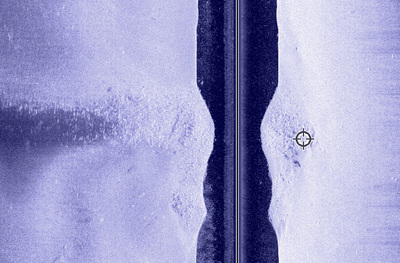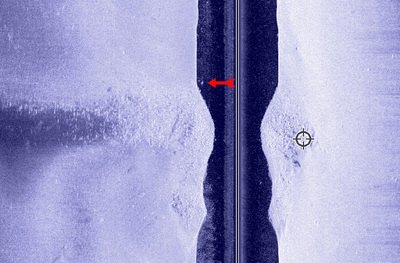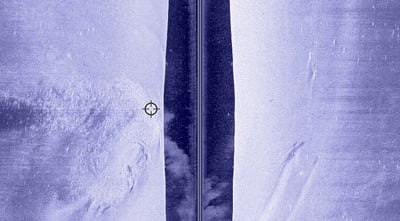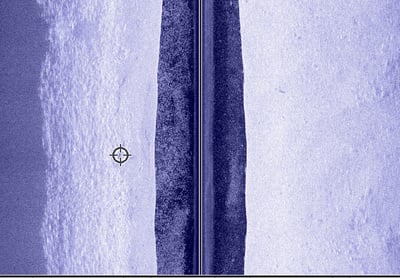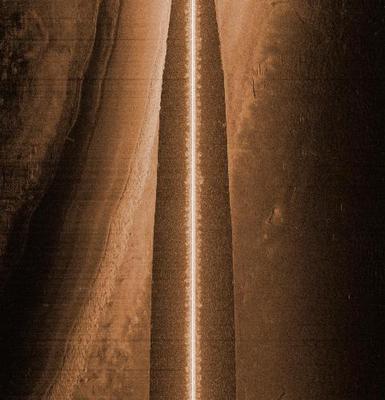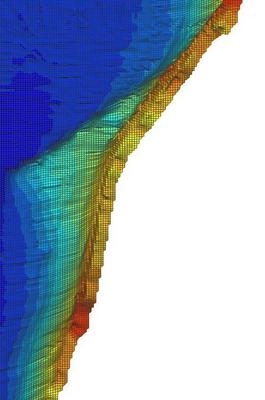Many river anglers are familiar with the fish-attracting abilities of man-made structures like wing dams and rip-rap shorelines. This past week, I had a chance to hook up with James Holst and Dustin Stewart to see how these river features are handled by Humminbird’s family of Side Imaging locators.
This first image is a wingdam. You can see it extending from the left end of the image through the centerline, with the tip of the dam marked by the round cursor. I imaged this dam moving upstream at ~ 4.5 mph, so the upriver (front) face of the dam is up.
Some cool things to note about this dam are (1) the small rockpile just downstream of the main body of the dam (below the dam, in these images), and (2) the fish (marked by the red arrow in the second image) sitting just where he’s supposed to be….in the slack water pocket at the base of the front face of the dam.
Humminbird’s Side Imaging technology provided all of that information, including the shape of the dam, the precise lcoation of its tip, the neat rockpile just below the dam, and even fish relating to the dam….all in one upstream pass at 4.5 mph.
